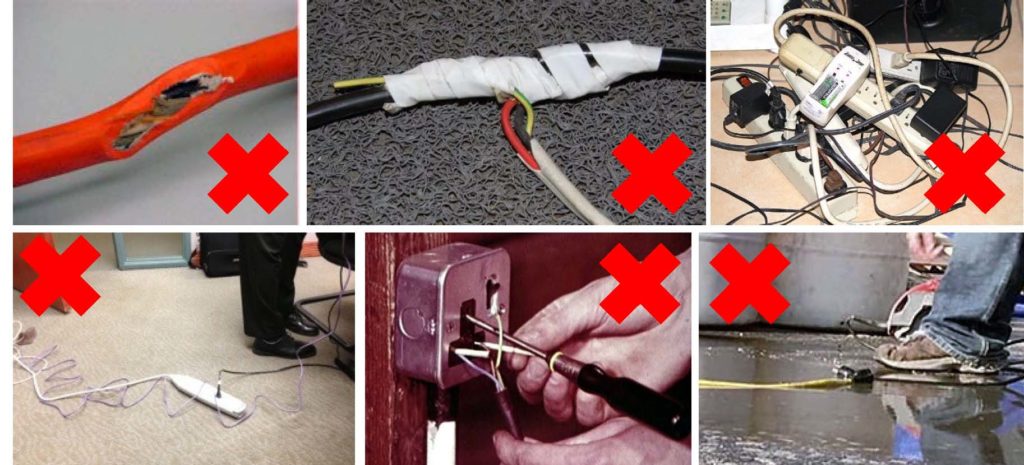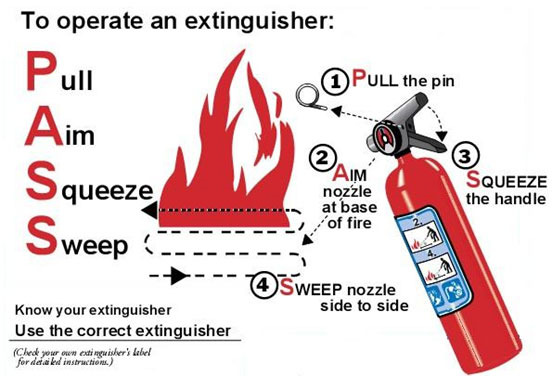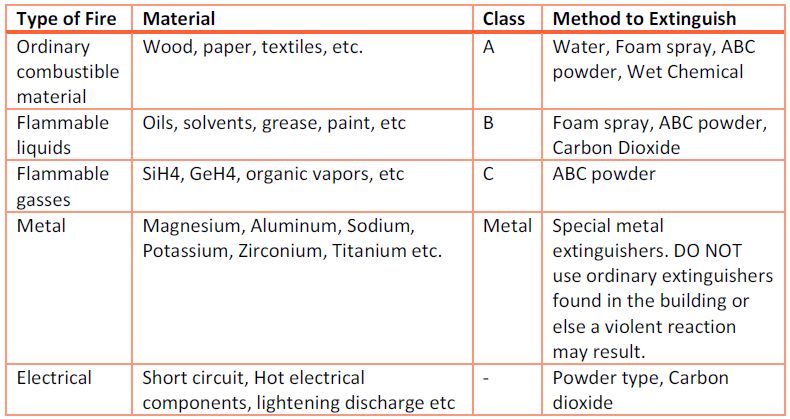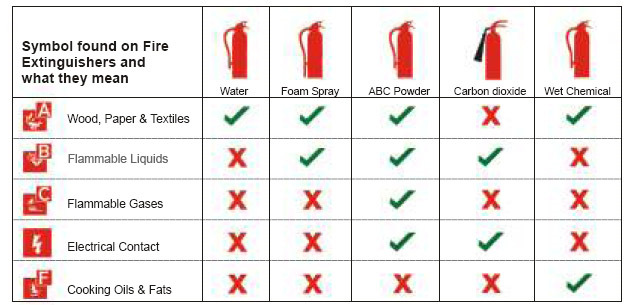Fire and Electrical Safety
The best defense against fire is to prevent the fire from starting. Everyone is responsible for fire prevention and for knowing how to handle a fire emergency.
Precautionary procedures
- Each lab will maintain a working landline near the exit.
- All labs must maintain a list of emergency contact numbers posted very near the phone at eye level. The emergency list should include cell phone numbers of the faculty in charge, the lab in charge, and other regular lab users. The emergency list should also include utility numbers such as the number for the IISc health centre, for the campus security, as well as the local police and the fire station
- Locate the fire exits, fire alarms and extinguishers in your laboratory. Each laboratory should be equipped with extinguishers. See the following section to learn about different types of fire extinguishers.
- Maintain adequate walking space in laboratory, minimum of 2 feet and unobstructed access to exits.
- Ensure adequate ventilation around objects that heat up (e.g.: lamps, CPUs, etc.).
- Avoid long-term storing carton boxes, thermocole and other plastic/packaging materials. These are a major cause of fire incidents.
- Papers, binders and manuals must be stored in enclosed containers/cupboards, away from hot objects.
- Do not block access to fire escape routes, even outside of the laboratory. For example, the stairs should be free of debris, nothing should be stored in front of fire hoses, etc.
- Keep your workspace neat and tidy. Oily rags, carton boxes, waste or papers improperly stored are common causes of spontaneous combustion. Store these materials in covered metal containers.
- Ensure that fire extinguishers are serviced and inspected regularly.
- Keep a small handy fire extinguisher near flammable chemicals and organics.
Electrical Safety
- Access to electrical equipment (e.g. plugs and switches) should be maintained free from obstruction.
- Electrical apparatus is equipped with ground plugs or is properly grounded.
- Make sure that live terminals are not exposed to direct or indirect touching in all switches and outlets.
- Ground fault circuit breakers are used as needed.
- Two-pin appliances (un-grounded) are not within a 5-foot radius of flammable materials.
- All current transmitting parts of electrical devices are enclosed.
- Electrical connections are not handled with wet hands or when standing in or near water.
- Safety devices (e.g. fuses) on electrical equipment are not bypassed.
- Electrical equipment is disconnected from electrical outlets or circuits when being adjusted, lubricated, moved, or cleaned.
- Electrical plugs, cords, and extension cords are maintained in good condition.
- Power strips and extension cords use is kept to a minimum and cords are as short as possible. Series of surge protectors are not a replacement of permanent plug points. If additional plug points are required, ask BMS.
- Cords are placed in areas where they are not exposed to physical damage. They are not run through doorways or ceilings or placed under carpets.
- Don’t splice extension cords or electrical cords without properly insulating the junction with insulation tapes.
- Always make sure that you don’t overload an electrical outlet (e.g. don’t connect a 15A device to a 5A socket). If an outlet is overloaded it may lead to fire in that circuit.
- Never try to extinguish an electrical fire with water (this can result in electric shock if the burning wires are still live); use only the proper fire extinguisher

Fire Extinguisher
- All must learn how to operate a fire-extinguisher. Mnemonic PASS is often used to describe fire extinguisher usage

2. Use correct type of extinguisher. Lab must have extinguishers for all type of hazards present inside it.

Following illustration shows different sources of fire and the right type of extinguisher to be used
(http://www.vcmfiresafety.com/images/)

Fire Safety infrastructure
- All departments are required to periodically evaluate the fire-preparedness. Depending on the hazards, the department my be required to invest in layers of Fire-alarms, sprinklers, fire-detectors, etc. General guidelines are:All multi-storied building must have an operational fire hydrant loop. The primary responsibility of maintaining the hydrant loop rests with the departments.
- All building with significant gas, electrical, or chemical hazards must have a sprinkler system. The maintenance and testing of the system are the receptibility of the departments.
- All departments must have an evacuation plan and emergency response team (ERT). Details are in Section on Emergency Response.

